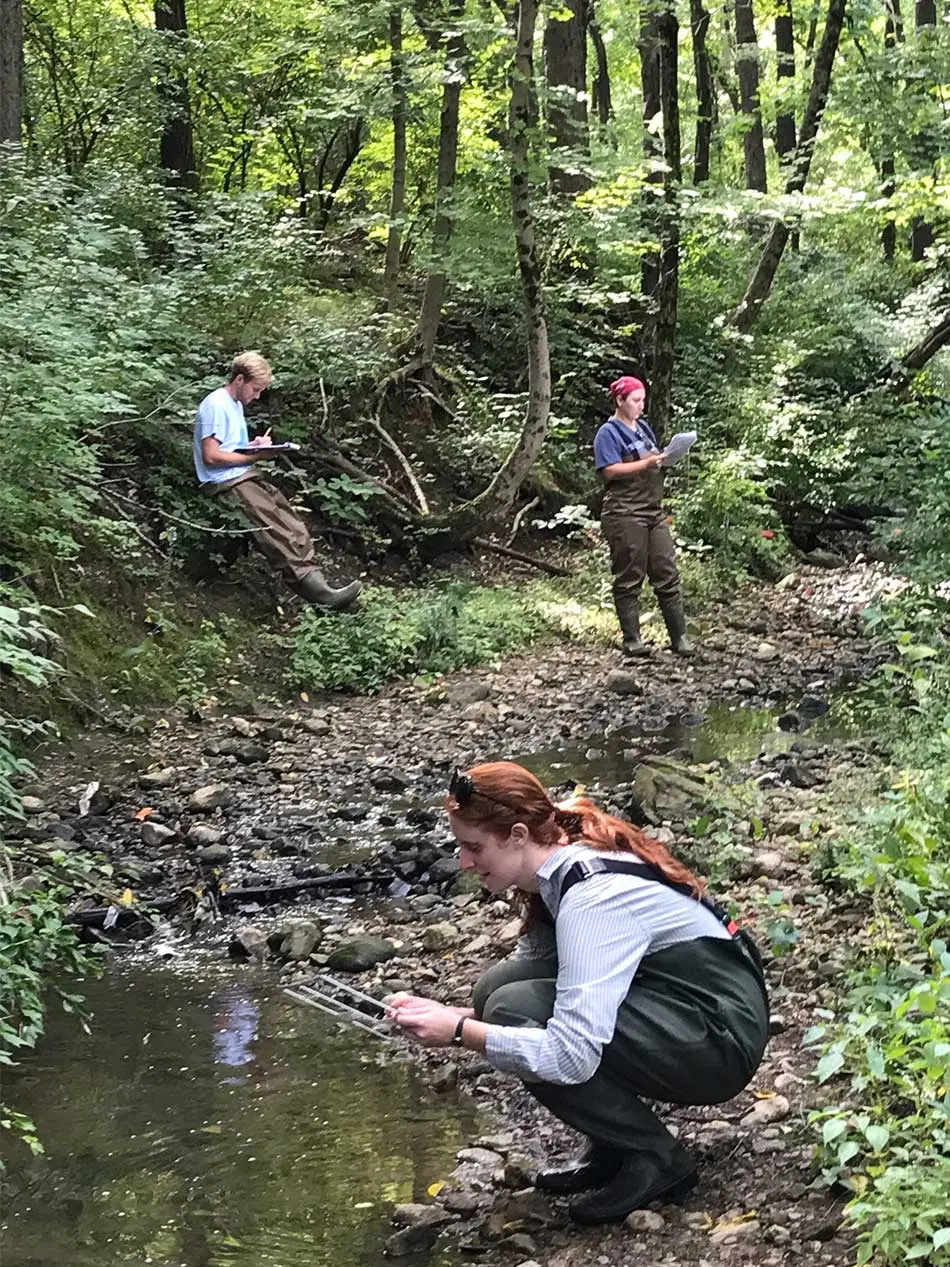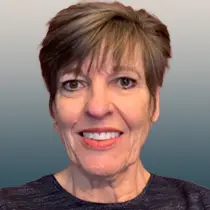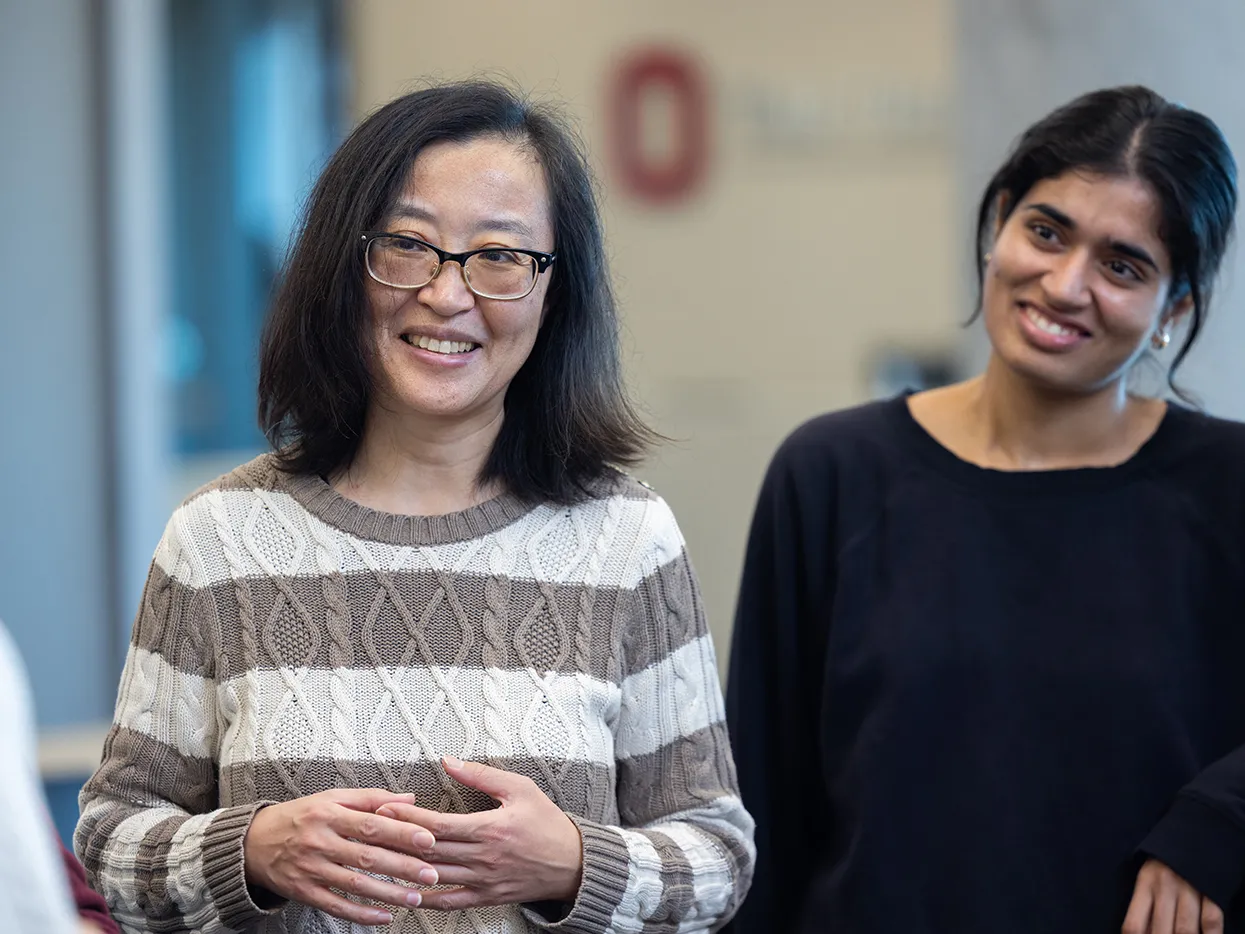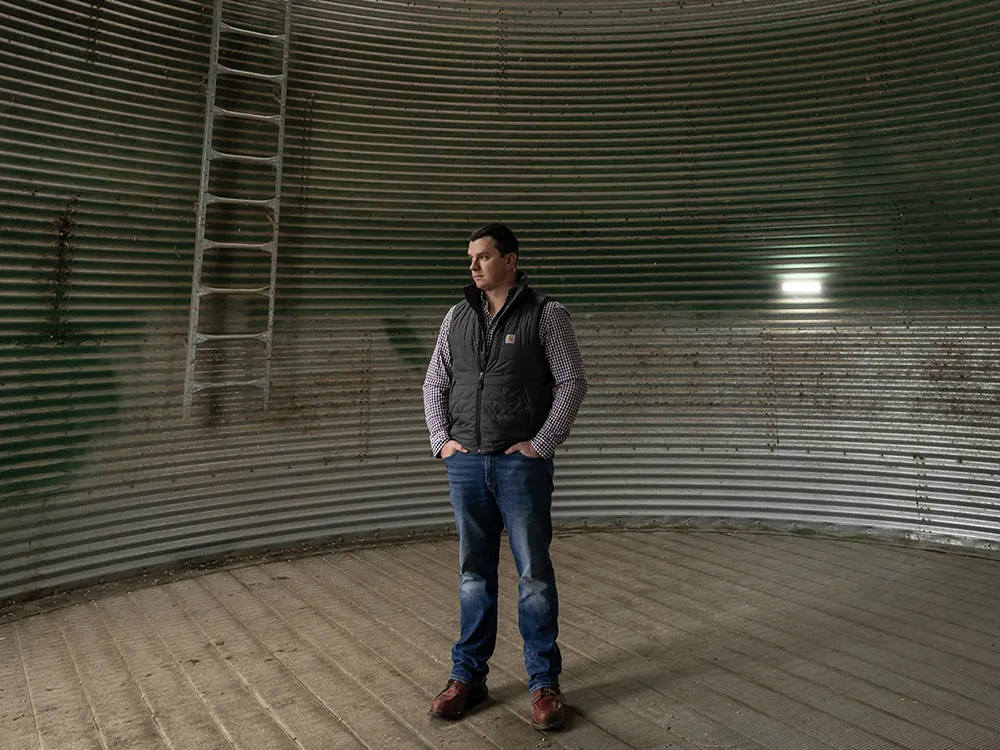Bumper crop
You might know Waterman Agricultural and Natural Resources Laboratory for its bucolic fields, farm-style buildings and grazing cows. A closer look reveals cutting-edge research and technology and a rich rural classroom on a bustling urban campus.

Andraya Starr, a dairy student assistant, starts chores at 4 a.m. daily, including feeding the calves that live at Waterman Agricultural and Natural Resources Laboratory.
On any given morning, drivers and cyclists passing the green space west of the Olentangy River, not far from the heart of Columbus, may or may not notice the cows. They always seem to be there — it’s Waterman farm after all.
Except that it’s not. Not entirely.
There is a dairy farm, and there are cows. But there also are bed bugs and termites and honeybees. And a turfgrass research facility, a woodland, streams, gardens — lots of gardens — and a shipping container housing thousands of black soldier flies devouring food scraps for a recycling project. Welcome to Waterman Agricultural and Natural Resources Laboratory, a 261-acre hub for teaching, research and outreach in food, agricultural production and environmental sciences.

(Video by Cara Reed and Andrew Ina)
“Waterman Lab expands the classroom from four walls to the entire outdoors and allows the university and community to engage in addressing many of the challenges facing the world today,” says Cathann Kress, vice president for agricultural administration and dean of the College of Food, Agricultural and Environmental Sciences. “Without Waterman, we do not have a comprehensive university.”
More than 100 active research projects are under way at Waterman, also home base to some 200 outreach programs in turf science, dairy management, entomology, ecological engineering, agricultural systems management, ecology and environmental science, sustainable agriculture, food science, medicine and behavioral science, and agronomic and horticultural production practices. A multitude of university courses — from beekeeping to biogeography — meet here.
The land once was owned by Joseph Waterman, a prominent agricultural figure in Franklin County. In 1905, his widow, Anna M. Waterman, titled 155 acres of the property to Ohio State for one dollar. The university purchased the remaining 106 acres in 1930. Since then, Waterman has been an essential educational and community resource — a critical component of a land-grant university and a model for how an urban-rural partnership works to create new knowledge and apply it to solve real-world problems.
Consider an ongoing crisis involving our food chain and supply. For more than a decade, honeybee populations have been on the decline. Last year alone, U.S. beekeepers said 40 percent of their colonies died unexpectedly. Honeybees are a major pollinator for crops that produce about a quarter of the food Americans consume, including more than 140 fruits, vegetables, seeds and nuts, and are essential for maintaining U.S. and global food supplies.
Associate Professor of Entomology Reed Johnson, a nationally recognized bee expert, is at the forefront of research unlocking the mysteries of honeybees’ demise. Recently, at the behest of the Almond Board of California (no bees, no almonds), Johnson discovered that insecticides and fungicides typically deemed individually “safe” for honeybees turn into lethal cocktails when mixed. Because of Johnson’s work, almond growers are rethinking their practices in order to preserve their $300 million-plus industry.

Associate Professor Reed Johnson and students in his beekeeping class inspect the hives at the Rothenbuhler Honey Bee Laboratory.

Bees crowd on a hive frame covered with honeycomb.

Students in Reed’s class examine a hive frame.
Each spring, Johnson teaches a beekeeping class to undergraduate and graduate students. For professor and students alike, Waterman is the perfect place for a full-size apiary. “It has the space to allow beekeeping, which otherwise would have to be relegated to limited lab space,” Johnson says. “The space provides a unique experience for our students and researchers — in the field, in the habitat.”
Graduate teaching assistant Stephanie Murray is living proof. She has been working with Johnson since 2017 and researches the behavior of honeybees and other social insects at Waterman Lab. The facility allows her to contextualize her classroom work.
“It’s wonderful to have a space like Waterman, with hives, so that we can really bee-keep,” Murray says. “When I work at Waterman, it’s the chance to apply the principles I’ve learned in an environment where I hope to one day work.”
Thinking upstream
As water quantity and quality become critical challenges at home and around the world, Mažeika Sullivan’s research on streams, rivers and wetland ecosystems is crucial to understanding the ecology and conservation of this precious commodity. Sullivan, associate professor of aquatic and riparian ecology and director of the Olentangy River Wetland Research Park, has been studying the physical, chemical and biological organization of streams at Waterman since 2008.

Students in a stream ecology class at Waterman Lab evaluate physical features such as sediment and channel dimensions. (Photo by Mažeika Sullivan)
“One of the great advantages of having Waterman Lab is that it allows for experimental science and long-term monitoring,” he says. “How streams function and how we manage them is something we can test over a long period of time and, with that archive of data, discover new and better ways to manage our ecosystems.”
Sullivan teaches Stream Ecology every fall at Waterman Lab. Also, to broaden the participation of underrepresented students in STEM disciplines, he invites incoming Ohio State freshmen taking part in the National Science Foundation-funded Louis Stokes Alliances for Minority Participation program to Waterman for a three-week summer program dedicated to water science.
“For many of the students who participate in the summer program at Waterman, it is their first opportunity to conduct hands-on research, and the experience has a tremendous impact on their course and career choices,” Sullivan says.
Woodland discoveries
Students in lecturer Alexis Londo’s Forest Biometrics class have 27 acres of Waterman Lab woodland to help them learn the concepts, principles and methodologies of forest inventories and management. Logan Ambrister, an undergraduate majoring in forestry, fisheries and wildlife, recognizes the woods as an amazing opportunity for Ohio State students. “Getting firsthand experience is essential to learning the ins and outs in any field that uses the forest.” Ambrister has been sampling migrating bird populations across different ecosystem types and studying the woodland as research for a potential business venture that would estimate the volume and value of a given forest.
Kathy Smith ’85, ’89 MS, Extension program director in forestry, knows the impact a woodland in the middle of an urban campus can have on teaching, learning and engagement. She earned a bachelor’s in forest management and a master’s in natural resources management from Ohio State, and she will tell you Waterman was a key component of her forestry curriculum. “The woodland at Waterman has had and continues to have a major impact on research and discovery that helps us all become better stewards of our forests and woodlands,” Smith says. “[It] showcases many of the issues our woodlands around the state are dealing with — the impact of nonnative invasive species such as emerald ash borer and bush honeysuckle on the woodland is not different from what landowners are seeing in their own woodlands across the state. As an Extension person, the ability to take woodland owners into a setting that closely resembles their own property and the issues they face is huge. Then being able to show them options on how to deal with these issues is what we are all about.”
There is much Kress wants to accomplish with the 261 acres called Waterman. In her State of the College address last fall, she pledged to “anchor Waterman Lab as a grand-challenges-focused facility.” Among those challenges are sustainability, the preparation of future scientists and leaders, and the interaction among human, animal and environmental health. The latter, sometimes referred to as “one health,” recognizes that the health of people is intertwined with that of animals and the environment.
“Our goal is to have every undergraduate student step foot on Waterman during his or her time at Ohio State, whether as part of curriculum, a research lab or a volunteer opportunity,” Kress says.
A growing laboratory
Ohio State’s College of Food, Agricultural and Environmental Sciences plans to invest more than $50 million in new Waterman Lab facilities within the next two years.
Kunz-Brundige Franklin County Extension Building
Opening in 2019
This new home for Franklin County Extension, currently located near downtown Columbus, features multifunctional meeting spaces, a teaching kitchen and a demonstration garden.
Controlled Environment Food Production Research Complex
Construction in 2020
The complex will include state-of-the-art greenhouse space and expand the college’s opportunities in plant DNA-based research, vertical farming and aquaponics. It also will provide a platform for interdisciplinary research in horticulture, engineering, entomology, pathology, food science, computer science and human nutrition/health.
Multispecies animal learning center
Construction in 2020
Cows, horses, chickens, swine and sheep will be housed at or transported to the center for outreach programs. The center will bring people and animals together for hands-on learning, public events and Extension programming.



